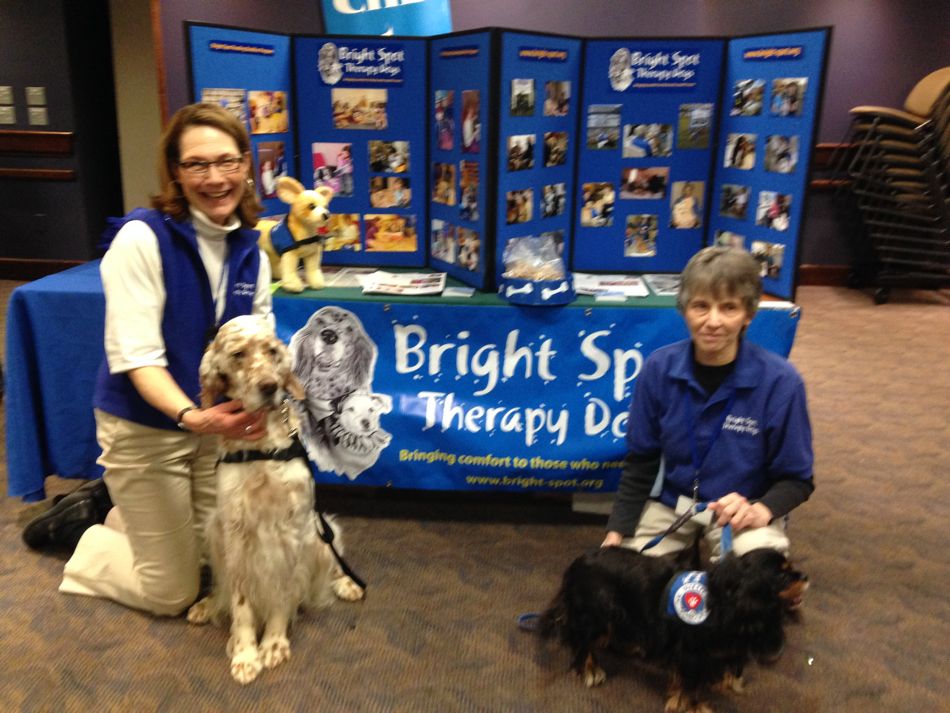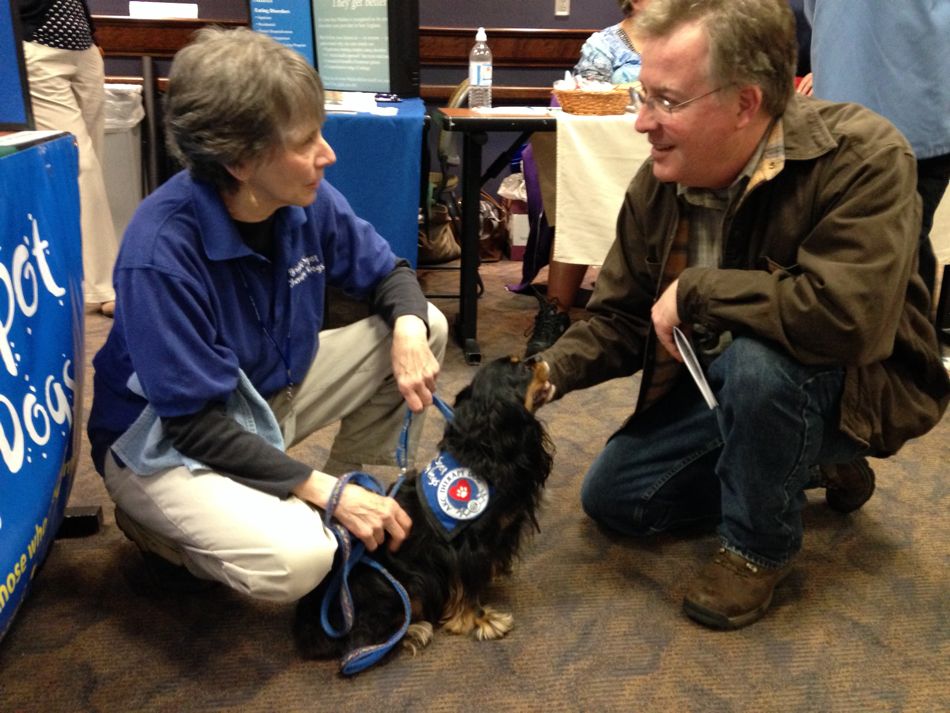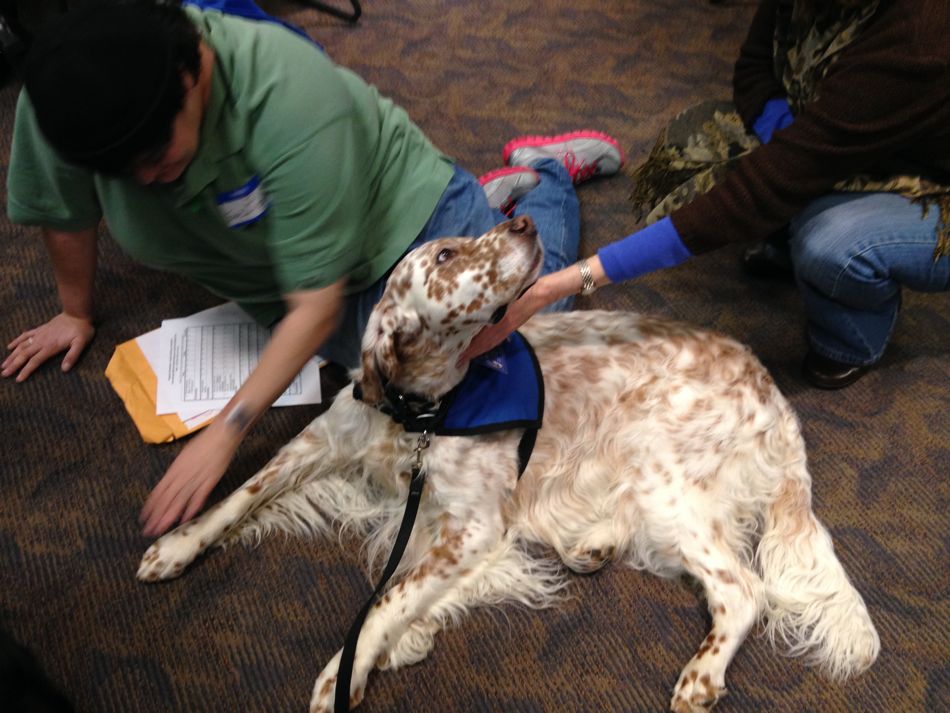When I received a call inviting Bright Spot Therapy Dogs to participate in the Mental Health Resource and Educational Fair at Cooley Dickinson Hospital on May 3rd, 2014, I immediately replied in the affirmative. Therapy Dogs and Mental Health are a perfect fit.
Dogs can bring new hope to people suffering from mental illness. Scientific research has proven that interacting with a dog releases the hormone oxytocin, the hormone that makes people feel relaxed and happy. Service Dogs, Assistance Dogs, Emotional Support Dogs, and Therapy Dogs are specially trained to help people in need. All the above, with the exception of Therapy Dogs, are trained to help the person they live with. Therapy Dogs and their handlers are trained as a team to go to a health care or educational facility and help others in need of comfort and caring.
The Mental Health Resource and Educational Fair ran from 10:00-4:00. Our booth was staffed throughout the day with several different Bright Spot Therapy Dog Teams. Our Therapy Dogs were a big attraction for those in attendance. People were very interested in learning about the places our Therapy Dogs visit. Many people were confused about the different types of dogs: Service Dogs, Assistance Dogs, Emotional Support Dogs, and Therapy Dogs. Unfortunately, these terms are misused and misunderstood even by those who should know, or really need to know, the difference. I often receive a call from a person whose physician has prescribed a Therapy Dog for him… A person suffering Post-traumatic Stress Disorder, may benefit from an Emotional Support Dog. For a physical disability, a Service Dog or Assistance Dog can be a life-safer. I explain to callers the difference and help them determine the type of dog they are looking for.
For a period of five years, I visited three mental health facilities in my area with two of my Therapy Dogs. Patient stay was short-term on the units. For the most part, we didn’t see the same patients from week to week. Often, though, I ran into the same patients as they cycled through the three facilities. Once the dogs were spotted coming on the unit, a familiar voice could be heard exclaiming, You’re here! I love being at the places where you bring the dogs! Or, It makes me feel so much better when I pet the dogs and hug them. Or, I’m not able to have my own dog now. I can’t even take care of myself. Thank you for bringing them here. Or, I feel like I don’t need any medication now that I have spent time with the dogs. Therapy Dogs visit wherever they can be of help to those who are unable to have a dog of their own, and to those who live in a facility. They are non-threatening, non-judgemental, and offer unconditional love.


